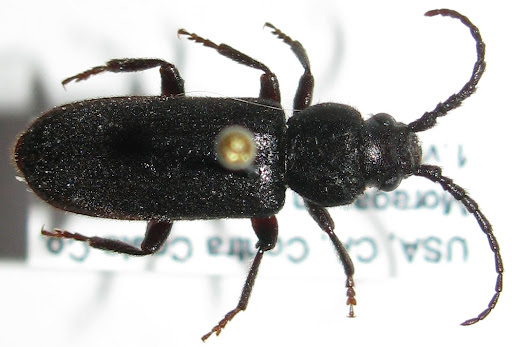My family annually goes to see the Bay Area Blonde Tarantulas making their way across the Mt. Diablo in Contra Costa County, CA. You can usually see at least three crossing the road on your way up the mountain. Two times previously we collected and mounted specimens, totaling two - not for academic collection per se, but more for display purposes. Anyway, this year we decided we'd take one of the males to a spot we knew had female burrows and see if we could help him get lucky. As luck would have it, we found an unmated female's burrow and placed him in optimal position to enter. He was taking his sweet time, so we left before he dared to signal her or enter the burrow, but fingers crossed! In the first picture below, you can see two of the female's legs in the burrow if you look closely.
Arachnida; Araneae; Mygalomorphae; Theraphosidae; Aphonopelma smithi
Common Name: Bay Area Blonde Tarantula
Common Name: Bay Area Blonde Tarantula
Tarantulas such as these are mostly nocturnal, and hide in burrows until a tasty meal comes within pouncing distance. They do not possess significant venom, as their size is more than enough to aid in catching prey, so their bites are more equivalent to bee stings. They are fragile, awkward spiders, and rarely venture far from their burrows. When the males reach maturity, which may be by their 7th year, they venture out of their burrows and begin walking across the land, hoping to come across the burrow of a female. When they find an open burrow, they enter and the male transfers his sperm pouch from his forelimb to the female. Once she accepts the packet, she may eat the male, though it is not uncommon for the male to escape. Once they leave their burrow in search of a female, they live only a few weeks. After the female has mated with the male, she spins a cover over her den, to prevent other male spiders from entering to mate. When we were searching for "available" females, we were looking for dens that did not have that web covering - surprisingly, most of the dens were covered, and after about 6 dens we found one that was open. There are more photos available in my Picasa album, but they are rather large, so I only put up a few.

